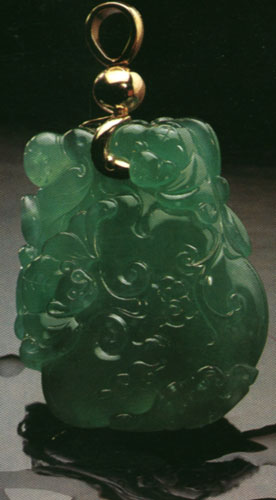First Look of Third China (Hunan) International Mineral & Gem Show: Jade

The evaluation principles for jade are 4C, 2T and 1V, which can be summarized as “five-good”, one degree and volume. “Five-good” refers to good jadeite, good water, good texture, good clarity, and good cutting. One degree refers to perfection degree. Volume refers to the size of volume. Generally speaking, the finished jade products can be evaluated from seven aspects as color, transparency, texture, clarity, cutting, crack and volume. Some people summarized it with the initials of the seven aspects’ English words.
4C refers to Color, Clarity, Cutting and Crack;
2T refers to Transparency and Texture;
1V refers to Volume.
The structure refers to the arrangement of jade grains. In the business, structure is also called texture. Coarse, close and loose textures are available. Texture is close to the transparency. Finer texture, the transparency is better. The texture of jade is also close to the beauty and durability of finished product.
The clarity of jade is one of the key points for its evaluation. The main flaws of jade are white and black. Black flaw is usually shaped as black dot, black thread and black belt, which is often formulated by hornblende and often found in the dark color jades. White flaw is usually shaped as granularity and bulk, which is often formulated by white jade, feldspar and other minerals and often found in coarse texture jades. On the process of evaluation, the jade’s value would be evaluated based on the damage caused by the flaws. The flaws would badly affect the value of top grade jade, while comparably less affect the common value jades. Black flaws would affect the value greater than white flaws.





